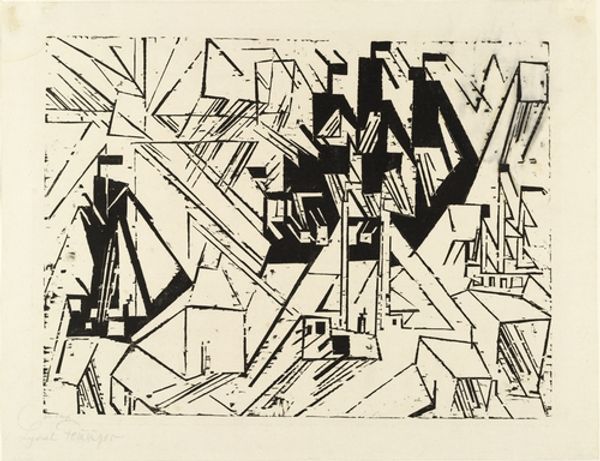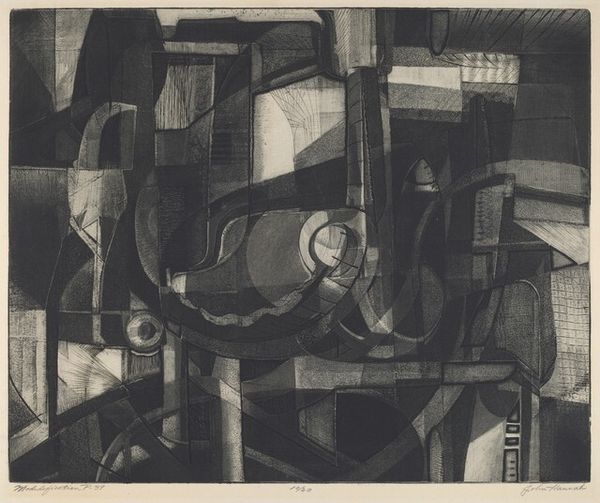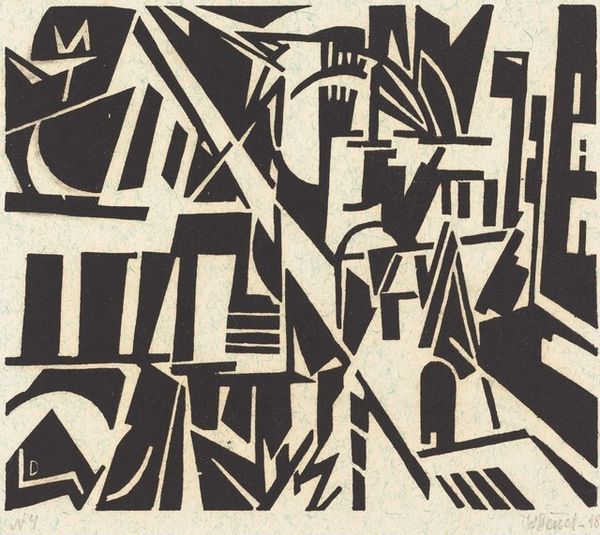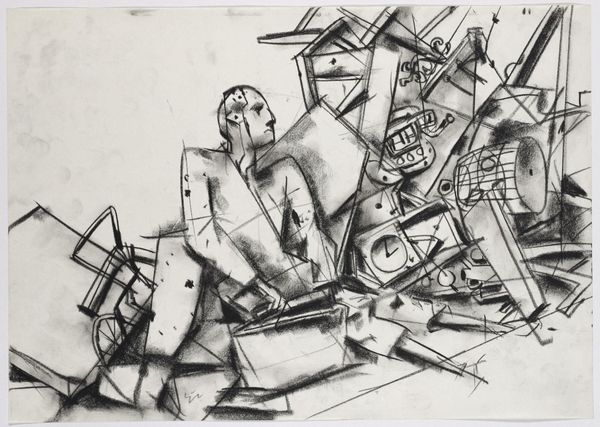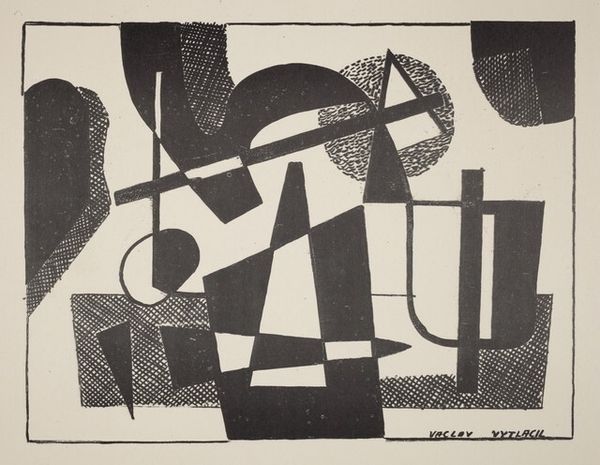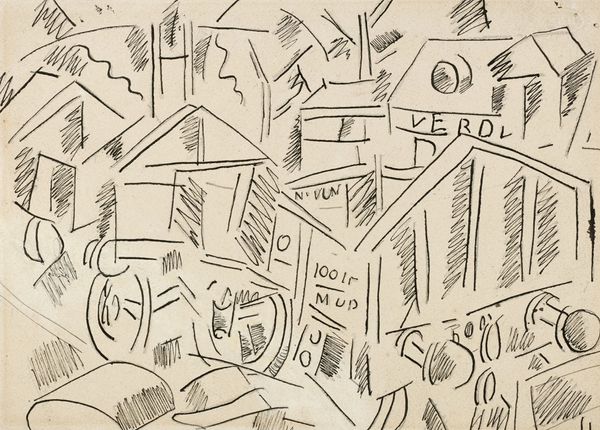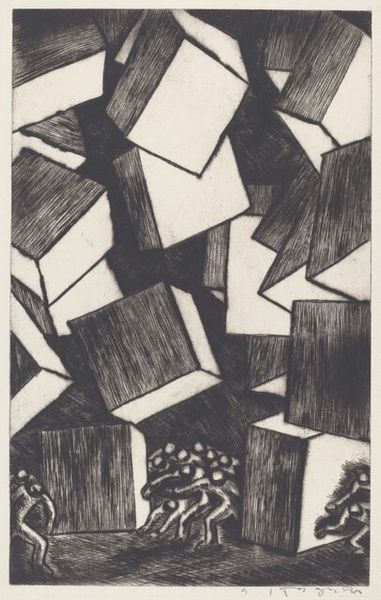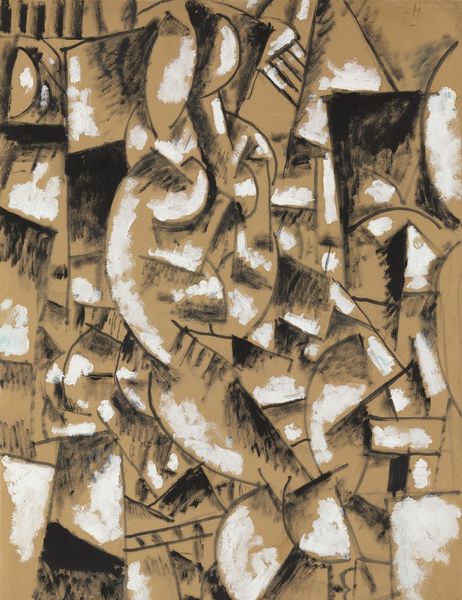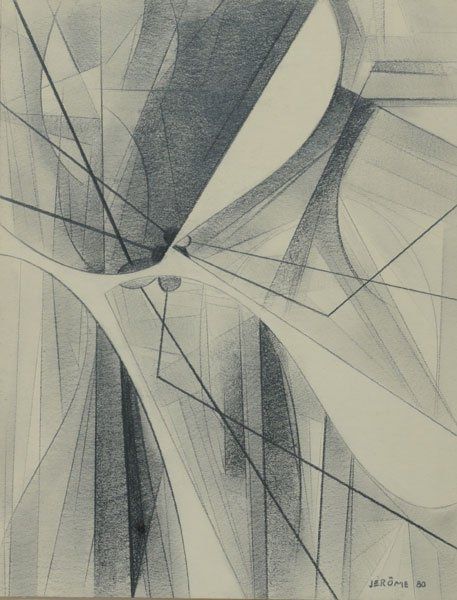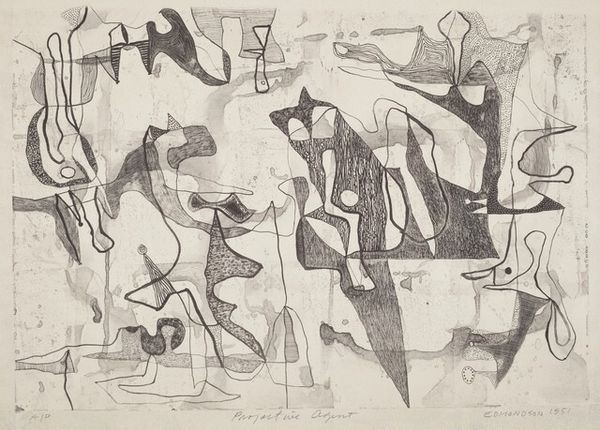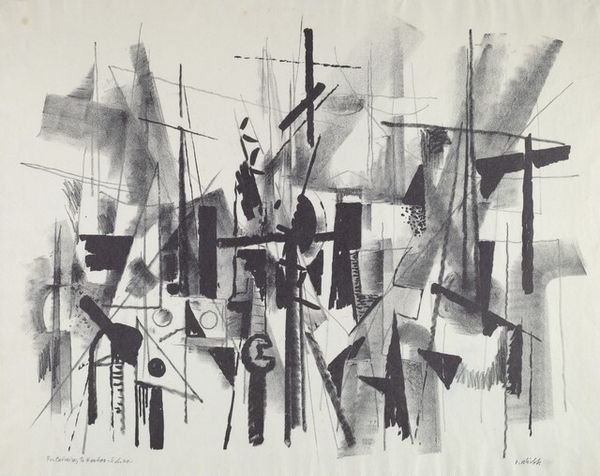
# print
#
constructivism
#
geometric
#
abstraction
#
line
#
modernism
Dimensions: overall: 38.7 x 57.2 cm (15 1/4 x 22 1/2 in.)
Copyright: National Gallery of Art: CC0 1.0
Curator: Here we have Ralston Crawford’s print from 1954, titled "10-12-54." What strikes you most about this piece? Editor: Well, immediately, it’s the angularity, the tension of all those lines. There's a fragmented feel to the entire composition. It’s almost as though a cityscape has been exploded and reassembled. Curator: Indeed. Crawford was deeply engaged with modernism, specifically with the Precisionist movement which sought to capture the sharp, clean lines of the industrial age. This print certainly embodies that, though with a touch of abstract expressionism creeping in perhaps? It was published by Brooke Alexander. Editor: It’s hard to ignore the echoes of wartime disruption here. Despite the apparent abstraction, could this angularity, this fractured presentation, speak to the psychological impact of global conflict on the modern psyche, on urban spaces especially? What audience did this print seek? Curator: That's a valid point. The date itself, "10-12-54," perhaps points to a very specific moment in time, but Crawford doesn't give us many clues as to what it might be referencing. He had an interest in jazz music and maritime subjects. The art world at this moment also focused on large institutions and high-end collectors, who were interested in art as pure commodity and detached aesthetics. Editor: The constructivist elements—those strong lines and geometric forms—feel quite deliberate. In a way, there’s an effort to rebuild, to create structure after potential destruction. Is it utopian in a subtle sense? I imagine Crawford as interested in the politics of form and their meanings as an act of defiance from representational art? Curator: I agree. Crawford was navigating a rapidly changing art world, and he was creating space for social critique through the very construction of the image, especially against post-war optimism. This piece, even without overt political symbols, engages with questions of power, identity, and perhaps trauma in ways that still resonate today. Editor: Precisely. Considering that context truly enriches how we view “10-12-54," doesn't it? I think it invites us to ponder the complex layers embedded beneath even seemingly purely aesthetic endeavors. Curator: I think that’s spot on. Thank you, it's such a great point to consider regarding the intersection of abstraction and historical awareness.
Comments
No comments
Be the first to comment and join the conversation on the ultimate creative platform.
